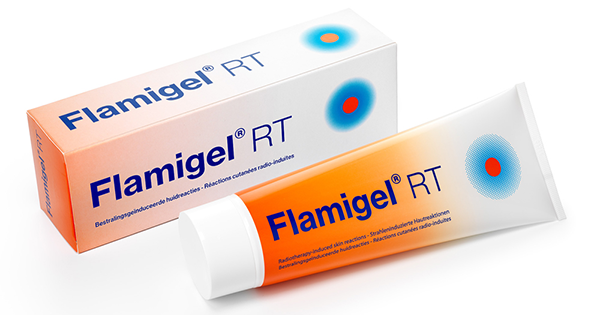Proton beam therapy (PBT) is a form of external beam radiotherapy that uses high-energy protons to treat malignant tumours. It operates on the principle of damaging cellular DNA. Due to a unique physical characteristic known as the Bragg peak, PBT delivers most of the radiation dose directly to the tumour while minimising the exit dose, thereby reducing exposure to normal and healthy tissues (Möllerberg et al, 2021). In the UK, PBT is only available at two NHS-commissioned sites (NHS England, 2019).
Radiation-induced skin reactions (RISR) are a common side effect of external beam radiotherapy (Lee at al, 2017), with over 95% of patients experiencing some form of skin change (Lee at al, 2017; Behroozian et al, 2021). RISR can occur within the first few hours of treatment and lead to damage to cells within the epidermis and dermis layers (Liao et al, 2017). This thins the skin, causing it to lose its protective function, decreases stem cell production, increases inflammation and causes swelling. Intrinsic and extrinsic factors such as concurrent chemotherapy, smoking and total radiation dose can affect the severity of RISR (Burke et al, 2022). A common toxicity assessment tool, the Radiation Therapy Oncology Group (RTOG; Table 1), is used in the UK to standardise the measurement of RISR in patients (Cox et al, 1999; Chan et al, 2014).
RISR can present differently across various skin tones. Light skin tones typically exhibit redness and pigmentation within the affected area, while dark skin tones often experience subtle darkening, along with colour changes such as grey, yellow or purple within the treatment area (Julka-Anderson, 2023).
Flamigel® RT is a hydro-active colloid gel developed by Flen Health as a solution to manage RISR. It restores moisture balance, reduces the intensity of early symptoms and delays the onset of moist desquamation, reducing its incidence in patients undergoing radiotherapy (Censabella et al, 2014; 2017).
It is applied topically and works by forming a protective barrier over the epidermis and damaged cells, relieving RISR symptoms.
This article aims to evaluate the effectiveness of Flamigel® RT in managing RISR in adults and children undergoing PBT at The Christie Hospital, Manchester.
Methodology
A service evaluation was conducted with 19 patients: eight received PBT alone, while 11 had concurrent chemotherapy with PBT. Of the 19 patients, six had surgery within the treatment area prior to starting PBT. The total radiation dose prescribed and fractionation regimen for this group of participants ranged from 50.4–75.6 Gray over 28–42 fractions. Each patient was immobilised during PBT according to standard local protocols.
Due to the mixed cohort of patients included, they were deemed to be high-risk of developing RISR if undergoing concurrent chemotherapy, treatment for head and neck cancers, or dose escalation for chordoma or chondrosarcoma. All patients were given standard skincare advice in accordance with the Society and College of Radiographers’ evidence-based guidelines (Society and College of Radiographers, 2020; 2022).
A detailed patient history was obtained to ensure that there were no contraindications to Flamigel® RT. Each consenting patient received two 250g tubes of Flamigel® RT, along with instructions for use and a patient information leaflet. Patients were instructed to apply Flamigel® RT to the treatment area three times daily from the start of their radiotherapy treatment, as recommended by product guidelines. The patients’ skin was monitored using the RTOG skin assessment tool [Table 1]. If patients experienced RTOG 2a or RTOG 2b with moist desquamation, the medical team intervened with Flaminal® (Hydro or Forte) or PolyMem dressings. RTOG 2b and above were classified as severe as the skin had broken down into moist desquamation.
All patients were evaluated by a senior therapeutic radiographer, a paediatric sister and a senior tissue viability nurse, completing an evaluation form as part of the review [Figure 1].
The service evaluation form was reviewed and approved by the local trust’s medical device committee. The committee agreed to proceed with evaluating Flamigel® RT in patients undergoing PBT who are considered at high risk of developing RISR. This decision was then documented in the committee meeting notes and received final approval in the subsequent meeting.
The primary outcome of the evaluation was to measure the time taken for RISR to progress to severe RISR, characterised by moist desquamation. Additionally, clinician opinion on the product and its efficacy in managing RISR were assessed as a secondary outcome.
Results
The evaluation form responses and key observations are summarised in Table 2.
By the end of their respective treatments, 52% (n=10) of patients did not experience severe RISR. High-risk patients had concurrent chemotherapy, underwent head and neck treatment or received dose escalation for chordoma or chondrosarcoma. Among the patients considered high-risk (n=17), 41% (n=7) experienced severe RISR. Of the children, 55% (n=6) experienced severe RISR and 38% (n=3) of adults experienced severe RISR. The majority of children (83%, n=5) experienced severe RISR in their last week of treatment, while 67% (n=2) of adults experienced severe RISR around halfway through their treatment.
See Table 3 for the characteristics of the patients who experienced severe RISR. All the children were treated with PBT and chemotherapy, but not with surgery, whereas the adults underwent surgery and received only PBT. Of the children, 50% applied Flamigel® RT twice daily and the other 50% applied it thrice daily. All adults applied the gel twice daily. There was no significant correlation between the frequency of Flamigel® RT application and the RTOG score. However, further evaluation with a larger patient cohort is needed to assess this relationship conclusively.
Discussion
The auditing team found that in nearly all patients, Flamigel® RT minimised the damage to the skin and, in some cases, prevented skin breakdown entirely.
Evidence suggests that severe RISR can develop earlier in a patient’s treatment if they have high-risk factors, such as concurrent chemotherapy, treatment for head and neck cancers, or receiving dose escalation for chordoma or chondrosarcoma. However, only 41% (n=7) of individuals identified as high-risk experienced severe RISR. Of the nine patients who did experience severe RISR, 67% (n=9) did so in the final week of their PBT treatment. This outcome can be attributed to the use of Flamigel® RT, which helped delay and prevent the development of severe RISR.
Engagement with the intended application of Flamigel® RT varied, with only 31.6% (n=6) applying it three times daily as intended. Of these, 50% (n=3) experienced severe RISR but also had concurrent chemotherapy. In contrast, 68% (n=13) applied Flamigel® RT only twice daily, with 38% (n=5) experiencing severe RISR and 80% (n=4) of these patients had one or more of the risk factors. Due to the small sample size and variations in patient risk factors, comparing the frequency of Flamigel® RT application and its impact on skin reactions was beyond the scope of this audit, but this finding highlights the need for further investigation.
There are significant cost savings for patients who do not develop severe RISR, despite having high-risk factors, including reduced staff interventions and a decreased need for specialist dressings (Censabella et al, 2014; Censabella et al, 2017; Society and College of Radiographers, 2020). The impact on a patient’s quality of life cannot be underestimated. Reducing the likelihood of patients developing severe RISR can help reduce the possibility of painful treatment areas, minimise disruptions to daily activities and decrease treatment interruptions (Censabella et al, 2014; Censabella et al, 2017; Society College of Radiographers, 2020). Clinicians’ and patients’ feedback revealed that the application of Flamigel® RT from the time of initiating PBT has improved the patients’ quality of life by delaying and, in some cases, avoiding RISR.
Limitations
This evaluation was conducted at a single specialist cancer centre, which limited the sample size. A larger sample size with distinct patient characteristics (e.g. age and skin colour), tumour site, high-risk factors and variations in dose and fractionation could aid in the stratification of intervention with Flaminal® and dressings earlier. Additionally, data collection timing varied slightly for some patients, as they were assessed within a few days of their midway point, potentially impacting the evaluation’s consistency.
Ensuring patients applied Flamigel® RT three times daily, recommended by the manufacturer’s guidelines, could provide additional evidence on the product’s efficacy in preventing severe RISR in patients.
The oncology ward staff did not have access to Flamigel® RT within their ward supplies. Consequently, any patient admitted for specialist support during the evaluation was not provided with the product. Improved communication between PBT and ward staff in the future will ensure that all individuals undergoing PBT receive protocolised care consistently.
Recommendations:
- Conduct future randomised controlled studies to fully establish the impact of Flamigel® RT Hydro-Active Colloid Gel on preventing RISR
- Evaluate additional products that may benefit patients with RISR.
Conclusion
Flamigel® RT was found to delay and, in some cases, prevent the onset of severe RISR in adults and children undergoing PBT. This protective effect was also observed in patients with high-risk factors known to influence the severity of RISR. Based on the findings of this evaluation, the use of Flamigel® RT is recommended for patients undergoing PBT. However, a multicentre trial with a larger sample size would help generalise the effectiveness of Flamigel® RT in patients undergoing PBT to minimise or eliminate RISR.


